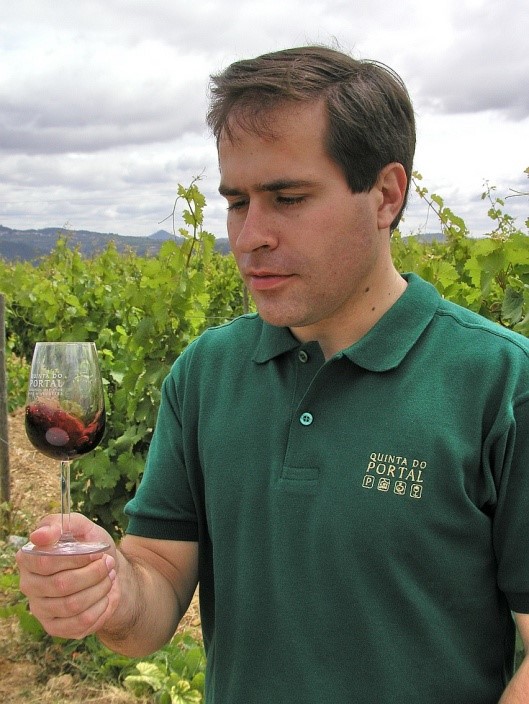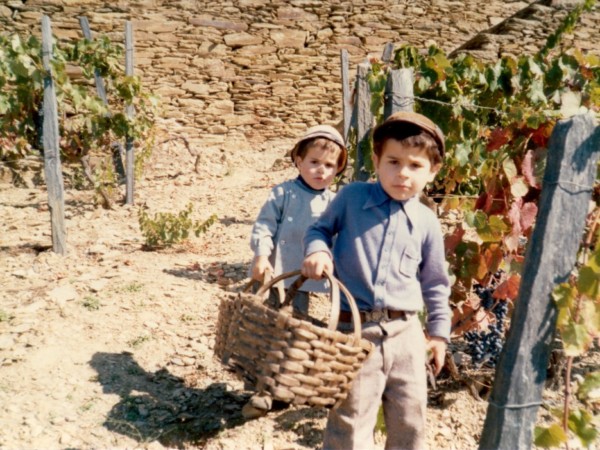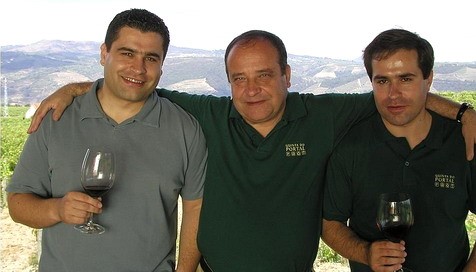Pedro Mansilha Branco is the visionary of Quinta do Portal. I first met Pedro in February 2002 in Seattle, at an IVP event. From my very first sip of the 1999 Vintage Port that day, I knew that Quinta do Portal would become a force to be reckoned with, and subsequently, I’ve visited their property eight times. Vintage Ports produced in 2000, 2003 and the soon-to-be-released 2007 vintage, put an exclamation point on that statement and the Portal Douro wines continue to improve each and every vintage. With a swank hotel on the premises and possibly the most modern and largest scale winery/warehouse facility in the entire Douro region; Portal has seemingly leveled the playing field. They’re positioned to become as well known as many of the traditional names in the Port trade over the course of the coming decade.

Here is Pedro’s story:
How did you break into the Port trade and at what age?
I’ve been in the Port world for as far back as my memories go. I remember the harvests, the “lagaradas”, the wonderful aromas that filled the air of the warehouse… My brother and I participated in the “vindimas” since we were small kids.

The Quinta do Portal project started in 1991 when we purchased Quinta do Casal de Celeirós (now Quinta do Portal) and Quinta do Confradeiro. This was when we really started getting into the trade as prior to this we were only producers.
What is your favorite style of Port to drink at home, and can you name 2 or 3 of the greatest Ports you’ve ever tried?
It’s difficult to name a single favorite style. I drink mostly 10 Year Old Tawny, Colheita, LBV and Vintage Ports. In the Summer time I always have a bottle of White Port in the refrigerator. Just yesterday we had the chance to share an incredible wine dated 1880 from a small grower. Some of the greatest Ports I’ve had include Colheitas: 1900 Andresen and 1963 Krohn and Vintage Ports: 1963 Graham, 1997 Quinta do Vesuvio, and 2003 Quinta do Portal. These are just a few of many more great wines I’ve had the chance to taste.
Besides Ports from your own company, what others do you most enjoy drinking?
It always depends on the style you’re looking for. I would go easily with Quinta do Vesuvio, Graham’s, Krohn and Poças. I think it makes a nice balance between the British and Portuguese houses.
What brings you the most joy in what you do within the Port trade?
My job is to look after the exports of Quinta do Portal. This gives me the opportunity to share our experience, our country, our region, our people and our wines with people from all over the world and welcome them into the Wonderful Kingdom (“O Reino Maravilhoso” as per Miguel Torga) of the Douro.
To be able to bring new people into the Port and the Douro world is the most gratifying part of the job. It’s very rewarding to hear from people that they weren’t fond of Port, but after the tasting/presentation they became fans.
Would you please share one piece of unique trivia or historical information about your company that would be new to FTLOP readers?
Our great grandfather’s uncle, Francisco Mansilha, wrote a book on how to take advantage of the excellent conditions of Quinta dos Muros, in order to make the best wines of the region. We were in the year of 1881 and he couldn’t be clearer when he wrote, “Those who know how to tend the wines of Quinta dos Muros will be convinced, through exams and comparisons, that there are no better in our country.” He died before finishing this book and our grandfather Manuel Mansilha wrote the final part in the mid-20th century. Later on, our grandparents made a will stating that the son that would inherit Quinta dos Muros, could only sell the estate to one of the brothers. Little histories and great wines that tell how important that land is to us.
Which individual has been your greatest mentor and how have they inspired you?
I must say that my father was my greatest mentor. He always taught us the value of hard work and how to face problems and adversity with courage. He has always encouraged us to travel, to experience different cultures and to be open minded to all themes. I believe this played a very important role in our maturation into adulthood and gave us a unique versatility regarding our approach into the business side of life.
He’s a tenacious man and is a long term visionary. In fact, not many people would start building a stock of Port and invest so much in new vineyard plantations, 20 years before developing a commercial project.
He’s a brave man that has a passion for the Douro and the wines that emerge from this unique piece of land. He’s a native of Porto, but lived in the Douro Superior as a child, (where his mother is originally from) and got married in the Cima Corgo, (where my mother is from).
What is the greatest challenge facing the Port trade today?
The greatest challenge is how to attract new consumers to Port, to renew the image of Port and keep it up-to-date. Port is still seen by many as an old man’s drink, a very seasonal drink (Holidays), very concentrated in a few consuming moments.
Another challenge we’re facing is in dealing with the power of the big buyers and the intense downward pressure they keep putting on the prices. I believe that by selling cheaper, we’re damaging the entire image of Port as a premium and unique drink. In fact this already happens in Port’s biggest markets where it´s just another commodity. The reaction of the consumers in markets like France when they taste through our Ports is quite amazing, as they are expecting something entirely different.
In the long-term, I believe we must focus on the higher quality wines, as these are the ones that can release funds to invest in brand building and in the overall promotion and image of Port. Port must be perceived as a quality wine by everyone.
Finally, we must put an end to all the wines bottled as “Port” that don’t come from the Demarcated Douro Region of Portugal.
Can you share one new project or improvement that your company is involved with?
We have just finished planting a new vineyard in an incredible location. The property´s name is Quinta das Manuelas and it is located below and between Quinta dos Muros, our first estate. We’ve planted 10 hectares with Tinta Roriz and Touriga Nacional in “patamares” (terraces) with only one row of vines per terrace. The vineyards start next to the Pinhão River and go up until reaching Quinta dos Muros. We believe this will be a primary location to source excellent grapes.
Our new cellars are now finished and we now have one of the best warehousing conditions for wines in the whole Douro valley. The building was designed by Álvaro Siza Vieira and besides having optimal conditions for our wines, it is a new landmark in the Douro.
What can the industry do to improve the promotion and education of Port wine and grow market share in the ever evolving beverage marketplace?
If we were a very rich industry I would say let’s go to national TV, make some placements in TV series and let’s showcase Port in the talk-shows. We must stick to reality and I think we should focus on the education. Education for the consumer, for the sommeliers/restaurateurs and for the retailers: focus groups tastings, food pairings, competitions for the sommeliers, etc.
We need to have more Port ambassadors around the globe. It’s also fundamental to bring people to the Douro. For this, stronger ties with the Tourism bodies must be established in order to organize trips to Portugal, so that people can experience a little bit of our world. When this is achieved, it will mark an important turning point. Roy and Mario are doing a great job with the trips they organize, but we need more of these to follow so that we start having critical mass that really makes some “noise” out there.
What non-wine activities do you enjoy?
Flying. I hold a private pilot license that takes me flying into the Douro landscapes very often. Then when on land I try to play some golf. I also participate in a few runs, primarily the half-marathon along the Douro from just after Pinhão to Régua. It’s the best scenery when running for a few miles. When it’s time for music, I play the drums.

João, Eugenio and Pedro Branco

Leave A Comment
You must be logged in to post a comment.